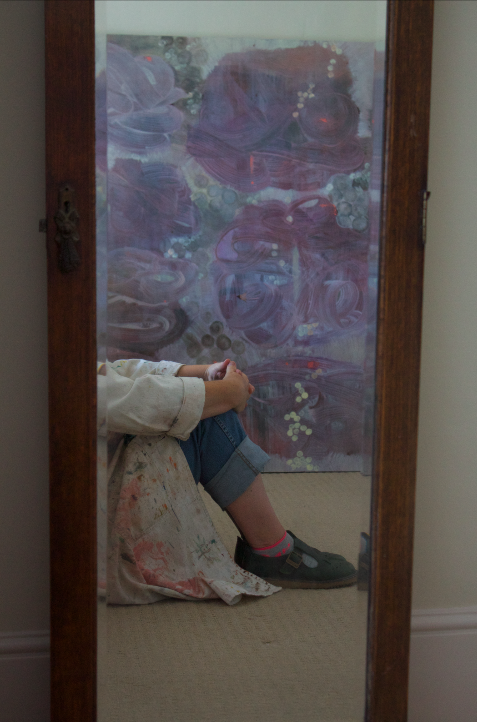Susan Absolon
United Kingdom
Website
www.susanabsolon.co.uk
Instagram
@susan.absolon
@susan.absolon.gouache
Contemporary British Painting
www.contemporarybritishpainting.com/susan-absolon
How would you describe your work?
I have two separate practices. I paint in oil on primed calico, linen, canvas, or board, and in gouache on paper. I’d describe my work as being from and of life, in an idiom that’s neither strictly figurative nor abstract. What interests me is to make work that has a sense of something known. Like a lot of artists, I work on many paintings at the same time, although each painting is allowed to develop on its own terms.
What inspires you?
I’d say I’m inspired by the possibility of language. With art, it’s a different system, a way of looking and thinking that transforms rather than reiterates. The language of art can make complexity visible in surprising, challenging and pleasurable ways. That’s what attracts me to it, holds me in it, and inspires me.
Can you speak about your process?
I’m conscious of trying to make something I didn’t know I wanted to see; individual, finished paintings that resonate with me viscerally and formally.
I don’t make preparatory studies, identify subject matter or take a specific direction with a painting until late in the making process. Different possibilities are pursued and reworked to a backdrop of words and associative thinking. The visual aspect of a painting and my inner monologue around it affect and modify each other. That’s what moves things along, where something unexpected can be made visible that connects painting to life. It’s a process that’s always on the edge of collapse. I’ve tried changing how I work to make it less nerve-wracking, but then I lose connection, authenticity. There are a few themes that interest me and these are made clear sometimes. In the making process, though, I’m more involved with how a painting can be made to articulate around word and image without figurative or narrative depiction.
Working in gouache stems from an enduring love of surface design. I was a kid in 1960s London. Design was hot and ubiquitous. I’ve never lost the thrill of the colour, graphics and energy of that era. I paint in gouache on a small scale, letting the formal aspects of shape, composition and colour determine the outcome. I turned to gouache in the 1990s after I graduated from art school in order to keep painting while my son was young, and I had a day job and no studio. By chance, I found myself moonlighting as a freelance contemporary rug designer. These days, working in gouache falls somewhere between design and picture making. As with oils, I make paintings up as I go along until they feel resolved. Occasionally I work from a preliminary cartoon, especially if there are collaged elements, but working straight off the bat is more rewarding. The weight of content and gravitas that comes with oil paint, falls away with gouache.
How did you become interested in art?
I grew up in a home that was full of paintings and books. Dad was a painter and art teacher, and mum was a good seamstress. It was natural for me to paint and make things from a very young age. I’d planned to be a graphic artist, fashion designer or illustrator but there are so many interesting things to do. It took me a decade after leaving school to get academic life and a more routine career out of my system. I signed up to art school as a mature student in my late 20s practicing fine art rather than design purely through circumstance.
Do you have any favorite artists, movies, books or quotes?
Artists, too many to mention all, but they include Per Kirkeby, Sonia Delaunay, Marion Dorn, Paule Vézelay, Prunella Clough, Ilse d’Hollander.
Films: THX1138, Paris Texas
Books: mostly non-fiction or poetry. I read all kinds of specialised texts on the internet – genetics, legal, social, scientific, philosophical, medical… Words feed into painting, so an online thesaurus is my go-to ‘book’. Of the books on my shelves, Edna O’Brien’s ‘The Love Object’, Ted Hughes’ ‘Birthday Letters’ and Hugo Williams’ ‘Billy’s Rain’ are favourites that have affected some of my paintings.
What advice do you have for younger artists?
Make art because you have to, because it’s your language.
All images ©Susan Absolon by permission













